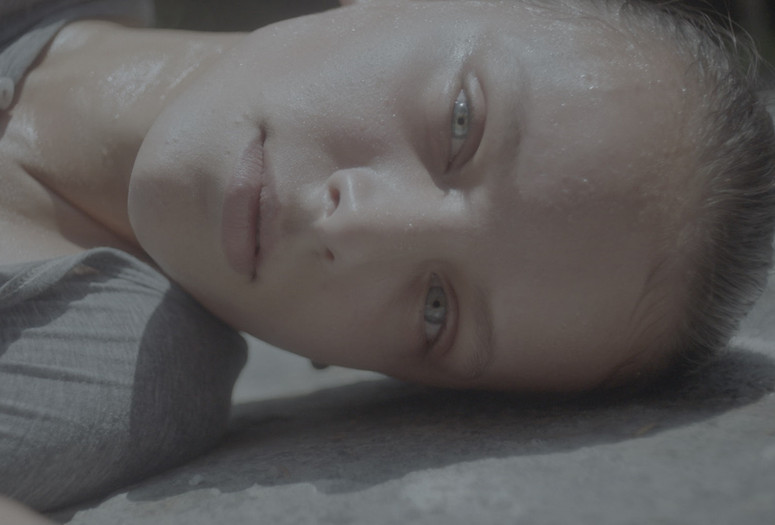|
|
||
|
Pro Tools
FILMFESTIVALS | 24/7 world wide coverageWelcome ! Enjoy the best of both worlds: Film & Festival News, exploring the best of the film festivals community. Launched in 1995, relentlessly connecting films to festivals, documenting and promoting festivals worldwide. Working on an upgrade soon. For collaboration, editorial contributions, or publicity, please send us an email here. User login |
New York: DOC Fortnight 2021
Continuing 19 years of unabated success, the film department of New York’s MOMA (Museum of Modern Art) celebrated 2021 its showcase of the most innovative nonfiction films from around the globe by known and new filmmakers from March 18 – April 5. The program included 18 documentaries, four shorts, and special projects with most being North America premiers alongside two world premieres. The festival was presented online as virtual cinema, covering a broad spectrum of themes with numerous productions using experimental hybrid filmmaking and politically oriented productions.
With strong underlying ethnographic elements, Emma Charles and Ben Evans James capture the folklore, myth, and history of Kazakhstan’s 1991 shift from a Soviet satellite to an independent state in their 2020 Kazakhstan UK documentary, ON A CLEAR DAY YOU CAN SEE THE REVOLUTION FROM HERE. Subsequent efforts by the government to instill a sense of identity in this crossroad of many cultures and countries drew on traditional cultural elements, the Silk Road, and strong links to its current Western capitalist economic system This is in part reflected by current Kasakh high-rise architecture in its new Nur-Sultan capital which contrasts with the mementos from the past, ranging from Soviet industrialization projects, including vast open mining sites which are still active, to a museum featuring nuclear tests caried out under Soviet rule in 1949 and 1953, and their consequences. This excavation of the meaning of the present and past explores a country squeezed between Russia and China. Persistent traces of past cultures are illustrated by contemporary Kasakh steppes and footage of villages as well as families in the city provide the implicit message that the new ‘modern’ identity will make returning to the nomadic life impossible, an experience that this country shares with Mongolia.
In most modern Western countries, renewal of “slums” and destruction of urban areas through eminent domain are common. Expanding transportation systems, building cultural centers for upscale affluent residents, or to attract of tourists are the norm. The consequences are the physical demolition of buildings and relocation of former residents under duress, resulting in whole scale “destruction of natural communities of meaning ” as the distinguished social scientist Peter Berger’ pointed out decades ago. This dissolution of communal life is accompanied by the extermination of the social and cultural life of dispersed former residents and their subsequent isolation. Most people in Manhattan probably do not know that Lincoln Center was constructed after numerous city blocks that used to be the home of vibrant multi-ethnic working class communities were demolished to meet the “cultural needs” of upscale New York residents. Evidently, the politicians and executives ordering the federally funded destruction did not live in the Lincoln Center areas, Isabel Lambert directed LA ULTIMA PRIMERA, THE LAST DAYS OF SPRING, a 2020 Spanish Dutch production and provides a succinct analysis of just such a destruction, the erasure of La Canada Real, a dangerous shanty town near Madrid. What is unique about Lambert’s approach is that she focuses on one family, the Gabarre-Mendoza clan, had them re-enact their own lives there. There are no professional actors in the production. Lambert’s participants are from La Canada Real and they play their past and present roles as members of the extended family. Her filmmaking takes a neo-realistic stance. A municipal agency ordered the destruction of their homes which they had built themselves with whatever materials available. The residents are waiting for the official ejection letters which terminate their communities and are forced to exist in a suspended life. Other consequences are the forced break up of multigenerational families living together, loss of their shanty town based work, and confrontations with unfamiliar bureaucratic procedures. For most, having to get a job to pay for rent was an imposition as they “owned” the shacks they had built and had made a living through recycling scavenged material, minor law evading jobs, or support from the community. In Lambert’s film, they certainly do not come across as being unhappy and problematic individuals though they live on the margins of society. Their problems started with the intervention of the government in their everyday lives, the destruction of their community, forced relocation, and a destabilized future.
Whenever one sees a production that stays in the mind long after the closing moments due to the innovative approach to its cardinal theme and a close to perfect structural and artistic execution, the viewer rests with an enlightening experience of outstanding film making. Moara Passoni is an award winning Brazilian filmmaker and co-author of the Oscar-nominated THE EDGE OF DEMOCRACY. She translated ten years of research on anorexia into ÊXTASE, a stunning, decade long, elucidation of Anorexia. Passoni incorporates firsthand personal and political experience in assessing the meaning of life from the perspective of Clara, who had been judged by members of her family, outsiders, and medical experts as suffering from anorexia. The filmmaker explores Clara’s experience of having been labeled as anorexic. Clara is speaking to viewers from her individualized universe, totally separate from what is shared by others, in muted reflections which she cannot share with others. The filmmaker succeeds by using Clara’s autobiographical and semi-philosophical comments about episodes in her life, from being a child to early adulthood. She shares reactions to her social and physical environment, the preoccupation with starvation and her body, and the ecstatic pleasures she derives from becoming weightless. The viewer accompanies Clara in her passage through childhood, the move with her mother to the concrete bunker environment of Brasilia, attending ballet school, and her numerous hospitalizations. Her fragility and disconnection from her body gives Clara pleasure, though throughout the film she remains lucid. For Passoni, the film does not serve to provide an account of the reasons for anorexia though she refers to disconnection from a community as a possible factor. She is more attuned to the phenomenology of experiencing anorexia, visible in her filmmaking approach. The result is a superb work of art with outstanding photography and score, crossing the borders of multiple realities. For her, Anorexia is a tragic gesture of refusal to surrender one’s body to the control of external agencies. New York Claus Mueller filmexchange@gmail.com
14.04.2021 | Claus Mueller's blog Cat. : anorexia destruction of community ecstasy ÊXTASE Kazakhstan tradition Kazakhstan modernization Moara Passoni urban renewal
|
LinksThe Bulletin Board > The Bulletin Board Blog Following News Interview with EFM (Berlin) Director
Interview with IFTA Chairman (AFM)
Interview with Cannes Marche du Film Director
Filmfestivals.com dailies live coverage from > Live from India
Useful links for the indies: > Big files transfer
+ SUBSCRIBE to the weekly Newsletter Deals+ Special offers and discounts from filmfestivals.com Selected fun offers
> Bonus Casino
About Claus MuellerThe EditorUser contributions |



























